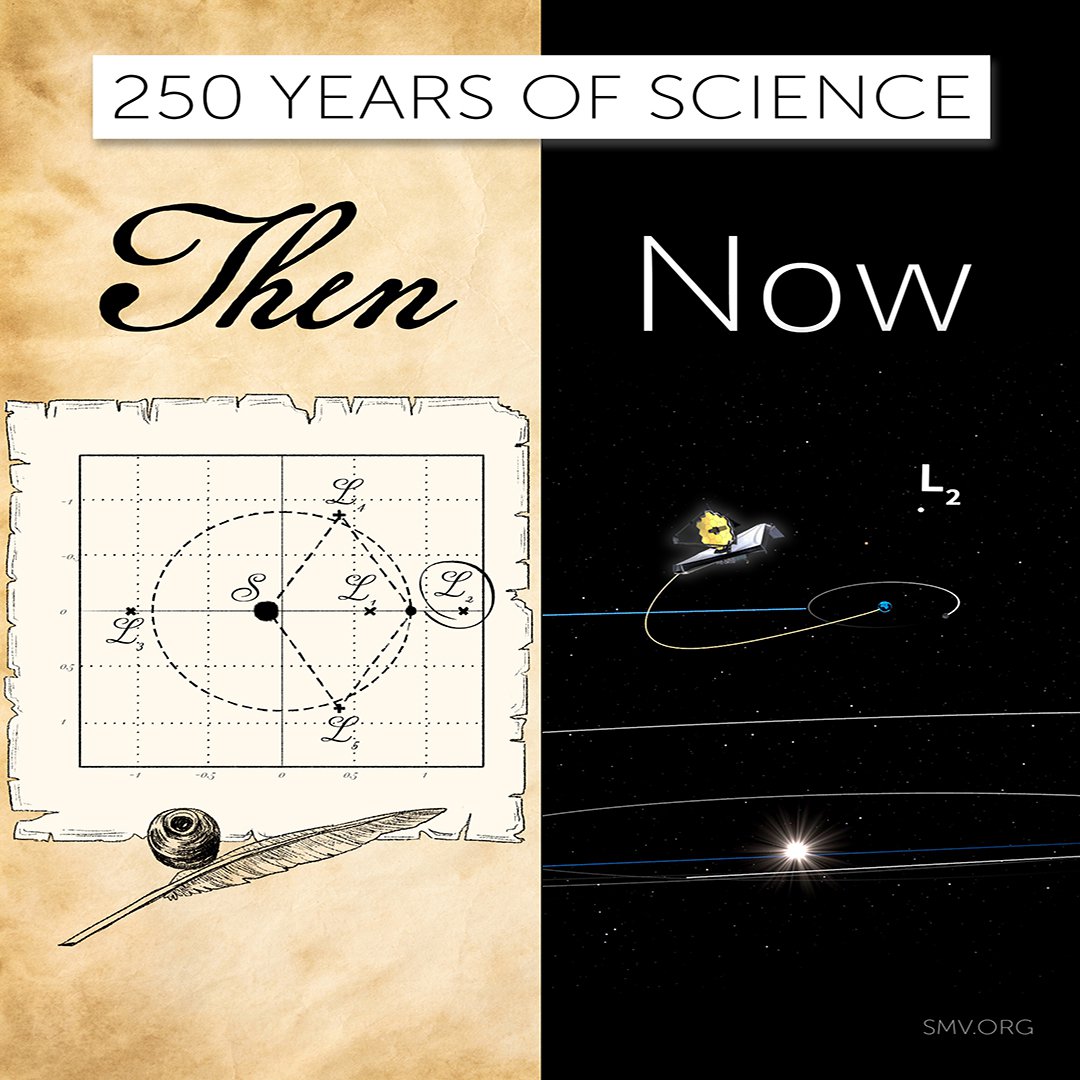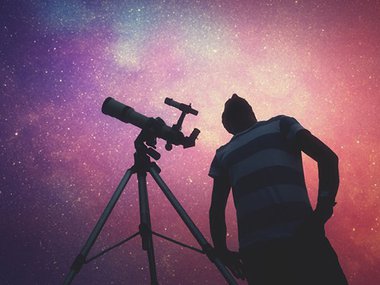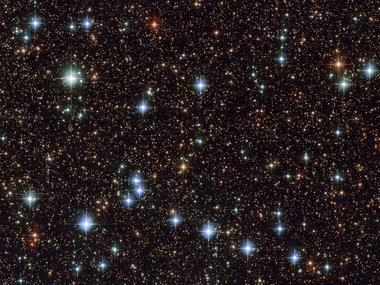Over the next 12 months, we'll be celebrating 250 years of America in Virginia. Scientific research in 1776 laid the foundation for many of the innovations we see today. By looking back, we gain a better understanding of our scientific present and future!
Astronomer and mathematician Joseph-Louis Lagrange published papers in the 1770s about gravity, motion and the long-term stability of objects in the Solar System. He discovered two positions where small objects tend to stay put near two larger ones due to competing gravitational forces. These two points are among five in a theoretical three-body system now referred to as Lagrange points.

Today, the James Webb Space Telescope's position is near a Lagrange point, which allows it to stay in line with the Earth as it orbits the Sun, saving fuel for course corrections.
There is much to look forward to in the scientific future of telescopes, too! The Giant Magellan Telescope (GMT) is due to be completed in early 2030s; it will collect 50 million times more light than the human eye and offer four times the resolution of the Webb telescope. GMT will search for hints of extraterrestrial life and advance our knowledge of dark matter and dark energy from Chile.
Relevant Virginia Standards of Learning include: 4.5, 6.2, PS.7 and ES.2


